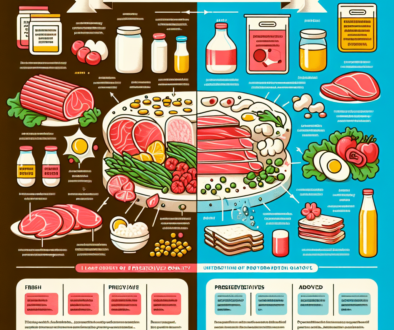Western Blotting: The Gold Standard for Protein Detection
-
Table of Contents
- Western Blotting: The Gold Standard for Protein Detection and Analysis
- Understanding Western Blotting
- Applications of Western Blotting
- Why Western Blotting is Considered the Gold Standard
- Challenges and Limitations
- Recent Advances and Innovations
- Case Studies and Statistics
- Conclusion
- Discover High-Quality Proteins with ETprotein
Western Blotting: The Gold Standard for Protein Detection and Analysis

Western blotting remains one of the most widely used techniques in molecular biology, biochemistry, and immunogenetics. Since its inception in the late 1970s, it has become the gold standard for protein detection and analysis, offering researchers a reliable method to identify specific proteins from a complex mixture. This article delves into the intricacies of western blotting, exploring its methodology, applications, and why it continues to be a pivotal tool in scientific research.
Understanding Western Blotting
Western blotting, also known as immunoblotting, is a technique used to detect and quantify specific proteins in a sample. The process involves the separation of proteins by gel electrophoresis, transfer onto a membrane, and subsequent detection using antibodies. Here’s a step-by-step breakdown of the western blotting process:
- Sample Preparation: Proteins are extracted from cells or tissues and denatured.
- Gel Electrophoresis: Proteins are separated based on size using SDS-PAGE.
- Transfer: The separated proteins are transferred from the gel to a membrane, typically made of nitrocellulose or PVDF.
- Blocking: The membrane is treated to prevent non-specific binding of antibodies.
- Antibody Incubation: Primary antibodies bind to the target protein, followed by secondary antibodies for detection.
- Detection: The presence of the protein-antibody complex is visualized using chemiluminescence, fluorescence, or colorimetry.
Applications of Western Blotting
Western blotting has a broad range of applications in various fields of research and diagnostics:
- Disease Diagnosis: It is used to confirm infections like HIV, Lyme disease, and Hepatitis B.
- Protein Function Analysis: Researchers use it to study protein expression levels, modifications, and interactions.
- Biomedical Research: It helps in understanding disease mechanisms and identifying potential therapeutic targets.
- Quality Control: In the biopharmaceutical industry, western blotting ensures the purity and consistency of protein-based products.
Why Western Blotting is Considered the Gold Standard
Several factors contribute to the status of western blotting as the gold standard for protein detection:
- Sensitivity: It can detect proteins at very low concentrations, often in the picogram range.
- Specificity: The use of antibodies allows for the precise identification of target proteins among a complex mixture.
- Versatility: It can be used with a wide variety of samples, including tissues, cells, and bodily fluids.
- Quantitative Analysis: With proper standards and controls, western blotting can provide semi-quantitative data on protein levels.
Challenges and Limitations
Despite its widespread use, western blotting is not without its challenges and limitations:
- Time-Consuming: The process can be lengthy, often taking a full day or more to complete.
- Technical Variability: Small changes in protocol can lead to significant differences in results, requiring careful standardization.
- Quantification Issues: Absolute quantification is difficult and requires additional methods for precise measurements.
- Protein Modifications: Not all post-translational modifications can be detected by western blotting.
Recent Advances and Innovations
Technological advancements have led to improvements in western blotting techniques, including:
- Enhanced Detection Methods: New substrates and imaging systems have increased sensitivity and dynamic range.
- Automated Systems: Automation has reduced hands-on time and variability, improving reproducibility.
- Digital Analysis: Software tools allow for more accurate quantification and data analysis.
- Miniaturization: Microfluidic western blotting requires less sample and reagent, reducing costs.
Case Studies and Statistics
Real-world examples highlight the importance of western blotting in scientific discovery:
- In 2019, a study published in “Nature Communications” used western blotting to identify a protein that protects against muscle wasting in cancer, opening new avenues for treatment.
- According to a 2021 market research report, the global western blotting market size was valued at USD 730 million, reflecting its essential role in research and diagnostics.
Conclusion
Western blotting continues to be an indispensable tool in the arsenal of molecular biologists and researchers. Its ability to provide specific and sensitive detection of proteins makes it the gold standard in protein analysis. While there are challenges and limitations, ongoing innovations and improvements are ensuring that western blotting remains relevant and effective in the face of evolving scientific needs.
Discover High-Quality Proteins with ETprotein
For researchers and industry professionals seeking high-quality protein products for their western blotting experiments, ETprotein offers a comprehensive range of protein solutions. Their products, known for their purity and reliability, are ideal for ensuring accurate and reproducible results in western blotting and other protein-based assays.
About ETprotein:
ETprotein, a reputable protein Chinese factory manufacturer and supplier, is renowned for producing, stocking, exporting, and delivering the highest quality organic bulk vegan protein and plant proteins. They include Organic rice protein, clear rice protein, pea protein, clear pea protein, pumpkin seed protein, sunflower seed protein, mung bean protein, peanut protein etc. Their offerings, characterized by a neutral taste, non-GMO, allergen-free attributes, cater to a diverse range of industries. They serve nutraceutical, pharmaceutical, cosmeceutical, veterinary, as well as food and beverage finished product distributors, traders, and manufacturers across Europe, USA, Canada, Australia, Thailand, Japan, Korea, Brazil, and Chile, among others.
ETprotein specialization includes exporting and delivering tailor-made protein powder and finished nutritional supplements. Their extensive product range covers sectors like Food and Beverage, Sports Nutrition, Weight Management, Dietary Supplements, Health and Wellness Products, and Infant Formula, ensuring comprehensive solutions to meet all your protein needs.
As a trusted company by leading global food and beverage brands and Fortune 500 companies, ETprotein reinforces China’s reputation in the global arena. For more information or to sample their products, please contact them and email sales(at)ETprotein.com today.














